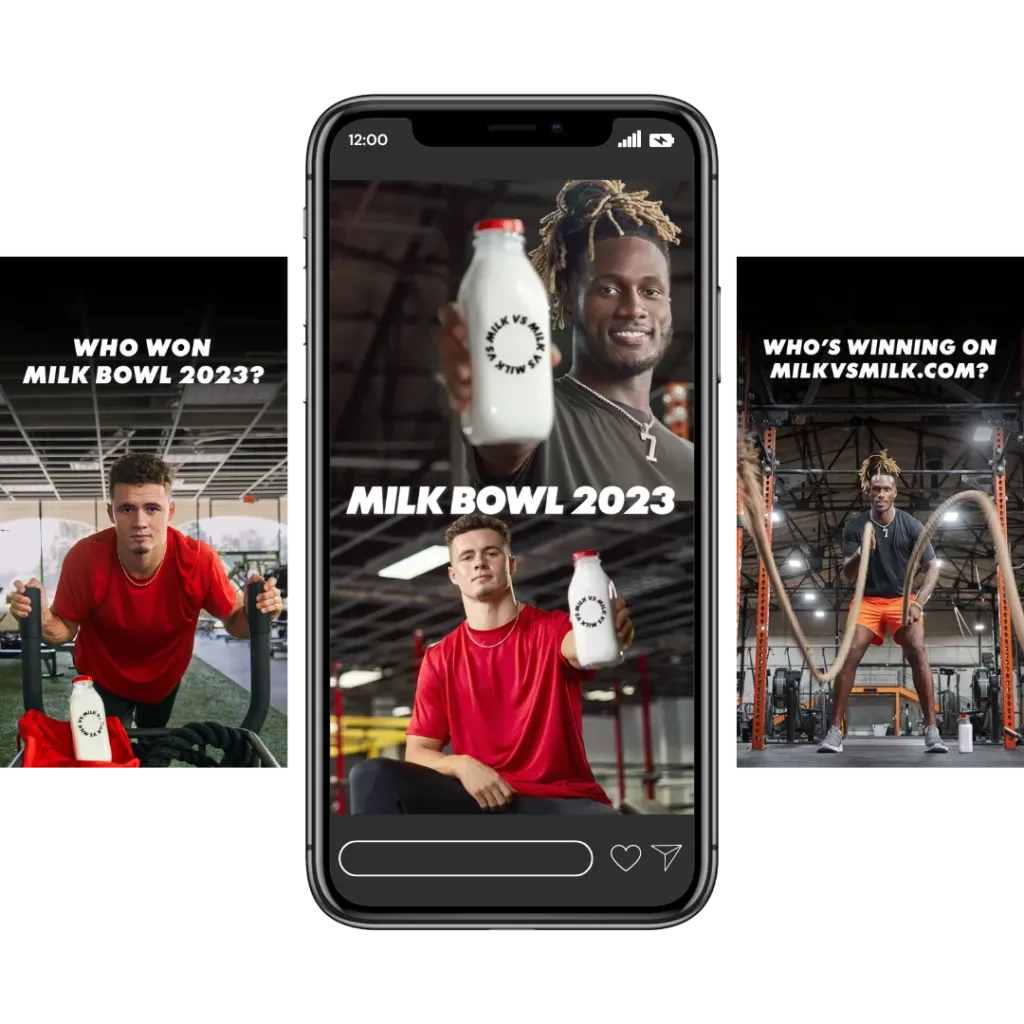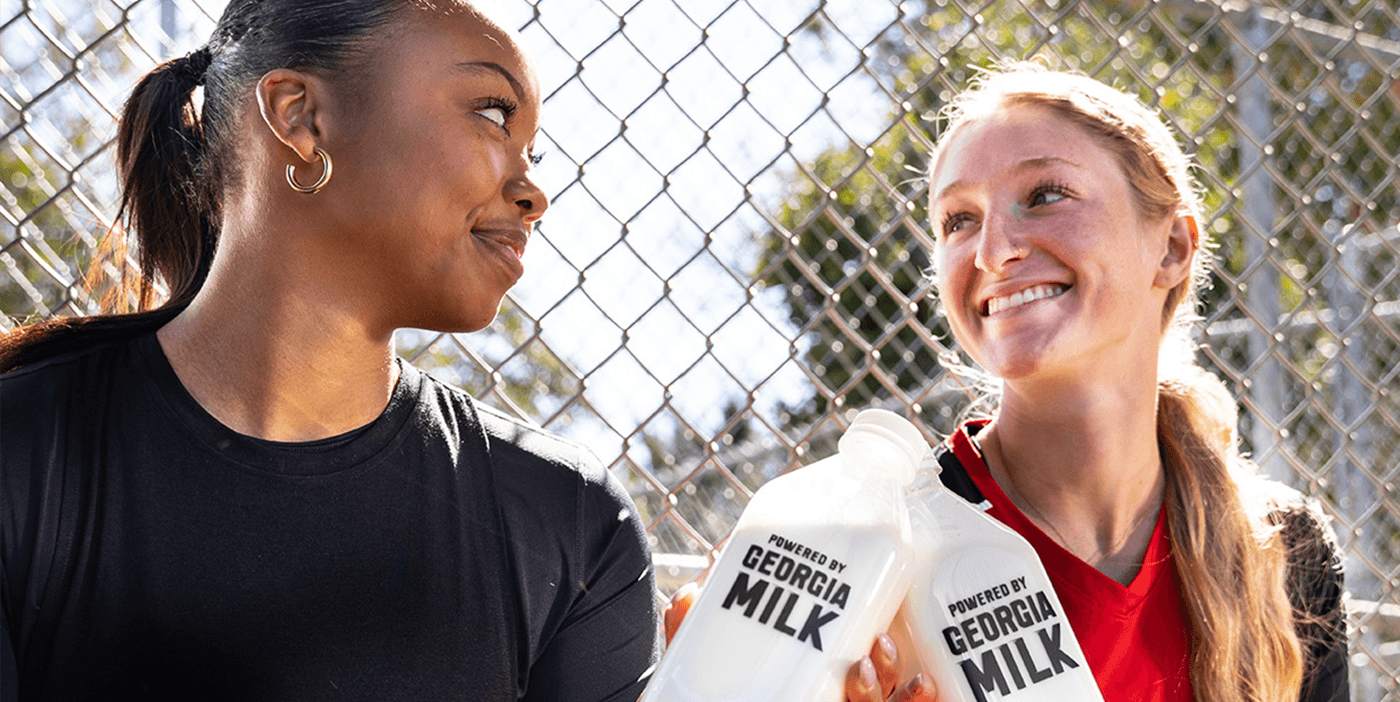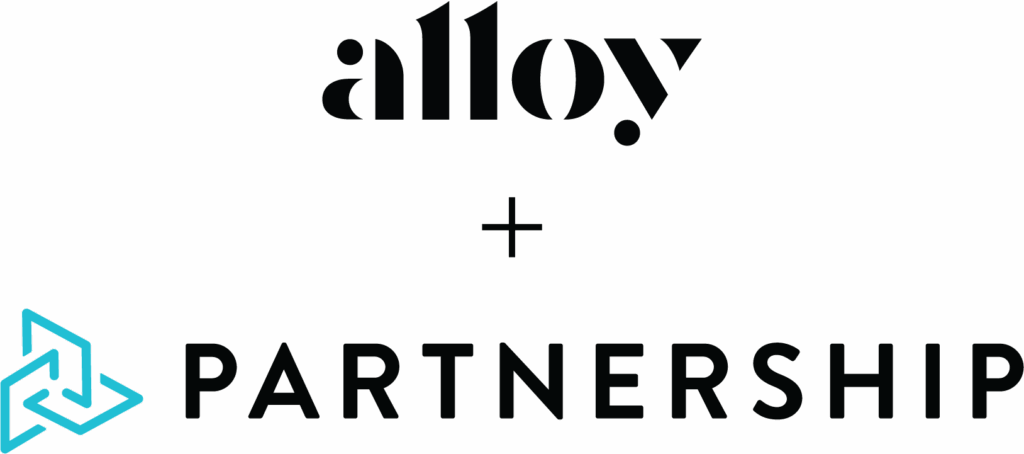How NIL Lost Its Spark and What Comes Next
The launch of NIL marketing in 2021 unlocked an entirely new category of endorsements for thousands of student-athletes. It was a breakthrough point in time, not just for athletes, but for marketers. Unlike traditional deals with pro athletes, NIL partnerships offered brands the chance to collaborate with highly visible collegiate talent at a fraction of the cost, delivering strong returns on modest investments. Marketing agencies jumped in, energized by the accessibility and authenticity that NIL campaigns made possible.

The Partnership was one of the first marketing agencies in Georgia to jump on the NIL opportunity in October 2021, teaming up with UGA football players for a dairy industry marketing campaign that brought NIL to life through local storytelling and athlete-led influence. It was a case study in how Name, Image, Likeness (NIL) marketing could work when done right – strategic, meaningful, and mutually beneficial. Then came the NIL collectives—and with them, a slow but undeniable shift in college sports marketing.
Leave it to a handful of boosters to turn a promising ecosystem into a pay-to-play arms race.
Today, the NIL landscape looks less like a marketing channel and more like a financial free-for-all. And with the recent House v. NCAA settlement poised to redefine college sports economics, it’s time to take a hard look at what’s changing, what’s working, and whether traditional NIL marketing still has a future at all.
NIL Rule Changes: A Quick Timeline
Here’s a high-level snapshot of how we got to this point:
Pre-2021: NIL Prohibited
Student-athletes were banned from profiting off their name, image, or likeness. Violations could result in suspension or loss of eligibility.
July 1, 2021: NCAA Lifts Ban on NIL
Following mounting legal pressure and new state laws, the NCAA adopted an interim policy allowing student-athletes to profit from NIL. The floodgates opened: endorsements, social campaigns, and local appearances became fair game.
2022–2023: Rise of Collectives
Donor-funded “collectives” emerged—groups that pooled money to offer NIL deals to athletes, often with limited deliverables. Some blurred the lines between recruiting incentives and true marketing partnerships.
2023: First Signs of Legal Overhaul
Legal cases began questioning the NCAA’s cap on athlete compensation beyond NIL. The momentum shifted toward broader reform.
May 2024: House v. NCAA Settlement
A federal judge approved a $2.8 billion antitrust settlement requiring the NCAA and power conferences to share revenue with athletes. This formally opens the door to direct pay-for-play revenue sharing, fundamentally altering the economic structure of college sports.
What the House v. NCAA Ruling Actually Means
Let’s not sugarcoat it – college athletics is no longer amateur in practice or in payout.
The House settlement accomplishes three major things:
- Backpay for Past Athletes
The nearly $3B settlement compensates former athletes who were prohibited from earning during the pre-NIL era. - Formal Revenue Sharing
Schools can now allocate up to 22% of their average annual revenues (~$20–25 million per school) directly to athletes, marking the beginning of pay-for-play. - A New Era of Athlete Compensation
This isn’t just about NIL anymore. It’s about total athlete earnings: team revenue sharing + NIL + endorsements = an economic model closer to pro sports.
The Reality on the Ground
Let’s call it like it is. Early NIL deals were grounded in something that’s become increasingly rare in today’s space: gratitude. Student-athletes, many of whom came from modest backgrounds, were genuinely thankful for the chance to get paid for doing the kind of appearances and content they had been doing for free. The exchange felt fair, exciting, and personal.
Contracts were honored. Content got posted. In those early days, marketers didn’t have to chase a 19-year-old quarterback for a TikTok or send five reminder emails to get an Instagram story live. There was mutual respect, follow-through, and enthusiasm on both sides of the deal. But now? The tone has shifted and not for the better.
Collectives have changed the landscape entirely. What began as partnerships rooted in mutual value has increasingly morphed into booster-funded salary surrogates. When athletes are receiving five-figure payouts just to show up at practice, the motivation to promote your product on Instagram dwindles fast. NIL isn’t about marketing anymore, it’s about money.
The high-tier athletes are still cashing in, but they’ve become harder to reach and even harder to engage. They’re swarmed with offers and can afford to be selective. Unless your brand has serious money, you’re likely not even in the conversation.
Meanwhile, mid and lower-tier athletes are losing interest altogether. What once felt like a meaningful opportunity now feels like an obligation. For many, smaller NIL deals aren’t worth the time, effort, or attention anymore.
So... Is NIL Marketing Dead?
Not quite. NIL marketing isn’t dead but it’s changing fast. If brands want to stay in the game, they’ll need to evolve with it.
Recent campaign for Georgia Fruit and Vegetable Growers Association
What’s ahead? Fewer, bigger, smarter deals. We’re moving into an era of exclusivity, deeper integration, and longer-term strategy. The future isn’t about one-off posts but instead about campaigns with real storytelling, real connection, and measurable impact.
In this new landscape, niche beats novelty. If you’re not Nike, don’t try to be. Instead, double down on regional relevance, authentic alignment, and campaigns that resonate on a personal or community level. That’s where real traction still lives.
Final Take
NIL marketing isn’t dead. But the gold rush is over. The rules have changed. The incentives have shifted. The expectations are higher. We’re now playing in a hybrid space somewhere between college tradition and pro-league economics. For agencies and brands that can adapt with originality, clarity, and creativity, NIL still has incredible potential.
But the days of “throw a jersey on and post” are over.
The future? It belongs to partners who can create purpose, not just a paycheck.



Ready to create meaningful Name Image Likeness partnerships that actually work? The Partnership’s integrated marketing team in Atlanta, Tampa, and Southwest Florida has been doing this since day one. We know what works and what doesn’t. Let’s talk about your next move.